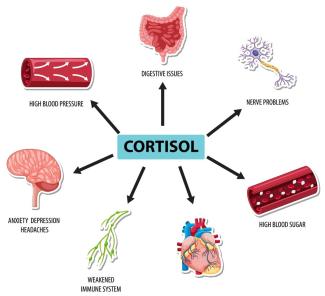
Stroke, or cerebrovascular accident, occurs when blood flow to an area of the brain is interrupted, leading to the death of brain cells. This can result in significant disability or even death. Preventing stroke involves addressing modifiable risk factors and adopting a healthy lifestyle. In this comprehensive description, we will explore various strategies to reduce stroke risk, including dietary recommendations, weight management, physical activity, and the impact of smoking, alcohol, blood pressure, and diabetes.
What Can I Do to Reduce My Risk of Stroke?
- Manage Blood Pressure: High blood pressure (hypertension) is a primary risk factor for stroke. Regular monitoring, adhering to prescribed medications, and adopting lifestyle changes (such as a low-sodium diet) are crucial for managing blood pressure levels.
- Control Diabetes: Diabetes increases stroke risk by contributing to vascular damage. Effective management includes maintaining blood sugar levels within recommended ranges, following a balanced diet, and regular physical activity.
- Lower Cholesterol Levels: Elevated LDL (low-density lipoprotein) cholesterol can lead to atherosclerosis, increasing stroke risk. Lifestyle modifications, such as a heart-healthy diet and statin medications if prescribed, can help control cholesterol levels.
- Quit Smoking: Smoking harms blood vessels, accelerates atherosclerosis, and increases clot formation. Quitting smoking has immediate and long-term benefits for reducing stroke risk.
- Moderate Alcohol Consumption: Excessive alcohol intake can raise blood pressure and contribute to stroke risk. It is recommended to limit alcohol consumption to moderate levels—up to one drink per day for women and up to two drinks per day for men.
- Adopt a Healthy Diet: Consuming a diet rich in fruits, vegetables, whole grains, and healthy fats while avoiding excessive salt, saturated fats, and sugars can support cardiovascular health.
- Maintain a Healthy Weight: Being overweight or obese increases the risk of hypertension, diabetes, and high cholesterol, all of which contribute to stroke risk. Weight management through diet and exercise is essential for stroke prevention.
- Stay Physically Active: Regular physical activity helps manage weight, lower blood pressure, improve cholesterol levels, and enhance overall cardiovascular health.
Which Foods Should I Eat and Which Foods Should I Avoid?
Foods to Eat:
- Fruits and Vegetables: These are high in vitamins, minerals, and antioxidants that support vascular health and reduce inflammation.
- Whole Grains: Foods like oats, brown rice, and quinoa are high in fiber and can help manage cholesterol levels.
- Healthy Fats: Incorporate sources of omega-3 fatty acids (such as fatty fish, flaxseeds, and walnuts) and monounsaturated fats (such as avocados and olive oil) to support heart health.
- Lean Proteins: Choose lean meats, poultry, fish, and plant-based proteins (such as beans and lentils) to minimize saturated fat intake.
- Low-Fat Dairy: Opt for low-fat or fat-free dairy products to reduce saturated fat and cholesterol consumption.
Foods to Avoid:
- Saturated and Trans Fats: Limit intake of fried foods, baked goods, and processed snacks high in unhealthy fats.
- Excess Salt: High sodium intake can contribute to hypertension. Avoid processed foods and use herbs and spices for flavoring instead of salt.
- Sugary Foods and Beverages: Excessive sugar intake can lead to weight gain and increase diabetes risk. Avoid sugary drinks and snacks.
- Red and Processed Meats: High consumption of red and processed meats can be linked to increased stroke risk due to their high saturated fat content.
How Does Maintaining a Healthy Weight Affect Stroke?
Maintaining a healthy weight is crucial for reducing stroke risk due to its impact on various risk factors:
- Blood Pressure Control: Excess body weight contributes to hypertension, which is a significant risk factor for stroke. Achieving and maintaining a healthy weight helps regulate blood pressure.
- Diabetes Management: Obesity is a major risk factor for type 2 diabetes, which increases stroke risk. Weight management can improve insulin sensitivity and help control blood sugar levels.
- Cholesterol Levels: Weight loss can positively affect lipid profiles by lowering LDL cholesterol and increasing HDL (high-density lipoprotein) cholesterol.
- Overall Vascular Health: Maintaining a healthy weight reduces strain on the cardiovascular system and decreases the likelihood of atherosclerosis and blood clot formation.
How Does Regular Physical Activity Affect Stroke?
Regular physical activity provides numerous benefits for stroke prevention:
- Blood Pressure Reduction: Exercise helps lower blood pressure by improving heart and blood vessel function.
- Cholesterol Management: Physical activity can help increase HDL cholesterol levels and lower LDL cholesterol levels.
- Weight Control: Exercise supports weight management, reducing the risk of obesity-related conditions such as hypertension and diabetes.
- Improved Blood Flow: Regular activity enhances circulation and reduces the risk of blood clots by promoting healthy blood flow.
- Stress Reduction: Physical activity helps manage stress, which is another factor that can contribute to stroke risk.
The American Heart Association recommends at least 150 minutes of moderate aerobic exercise or 75 minutes of vigorous exercise per week, along with muscle-strengthening activities.
How Does Smoking Increase the Risk of Stroke?
Smoking significantly increases stroke risk through several mechanisms:
- Damage to Blood Vessels: Tobacco smoke contains chemicals that damage the endothelial cells lining blood vessels, leading to atherosclerosis.
- Increased Blood Clotting: Smoking promotes blood clot formation by increasing platelet aggregation and reducing blood flow.
- Elevated Blood Pressure: Nicotine raises blood pressure and contributes to hypertension.
- Accelerated Atherosclerosis: Smoking speeds up the process of plaque buildup in the arteries, which can block blood flow to the brain.
Quitting smoking can rapidly reduce stroke risk and improve overall cardiovascular health.
How Does Alcohol Increase the Risk of Stroke?
Alcohol consumption impacts stroke risk in several ways:
- Blood Pressure Increase: Excessive alcohol intake can raise blood pressure, a major stroke risk factor.
- Increased Risk of Blood Clots: High alcohol consumption can affect blood clotting and contribute to clot formation.
- Heart Rhythm Disorders: Heavy drinking can lead to arrhythmias (irregular heartbeats), such as atrial fibrillation, which increases stroke risk.
- Obesity Risk: Excessive alcohol consumption is associated with weight gain and obesity, which are risk factors for stroke.
Moderating alcohol intake is recommended to minimize these risks.
How Does Blood Pressure Increase the Risk of Stroke?
High blood pressure is a major contributor to stroke risk due to:
- Increased Stress on Blood Vessels: Elevated pressure causes damage to the walls of blood vessels, making them more prone to rupture or blockage.
- Atherosclerosis: Chronic hypertension accelerates the buildup of plaque in the arteries, leading to reduced blood flow to the brain.
- Risk of Blood Clots: High blood pressure can promote the formation of blood clots that can obstruct blood flow to the brain.
- Potential for Hemorrhagic Stroke: Extremely high blood pressure can lead to the rupture of a blood vessel in the brain, causing a hemorrhagic stroke.
Managing blood pressure through lifestyle changes and medication is crucial for stroke prevention.
How Does Diabetes Affect Stroke?
Diabetes affects stroke risk in several key ways:
- Vascular Damage: Chronic high blood sugar levels can damage blood vessels, leading to increased risk of atherosclerosis.
- Elevated Blood Pressure: Diabetes often coexists with hypertension, which compounds stroke risk.
- Impaired Blood Clotting: Diabetes can affect blood clotting mechanisms, increasing the likelihood of clots forming in the blood vessels.
- Increased Inflammation: Diabetes is associated with higher levels of systemic inflammation, which can contribute to vascular damage and stroke risk.
Effective management of diabetes, including diet, exercise, and medication, is vital for reducing stroke risk.
How Does a Healthy Lifestyle Affect Stroke?
A healthy lifestyle reduces stroke risk through several interconnected factors:
- Balanced Diet: A diet rich in fruits, vegetables, whole grains, and healthy fats supports cardiovascular health and reduces stroke risk.
- Regular Exercise: Physical activity helps manage weight, blood pressure, and cholesterol levels, all of which contribute to lower stroke risk.
- Avoidance of Harmful Substances: Avoiding smoking and moderating alcohol intake can significantly reduce stroke risk.
- Stress Management: Effective stress management techniques can help maintain healthy blood pressure and overall cardiovascular health.
- Regular Health Check-ups: Regular monitoring of blood pressure, cholesterol, and blood sugar levels helps in early detection and management of risk factors.
By adopting these healthy habits, individuals can significantly reduce their risk of stroke and improve their overall health.






